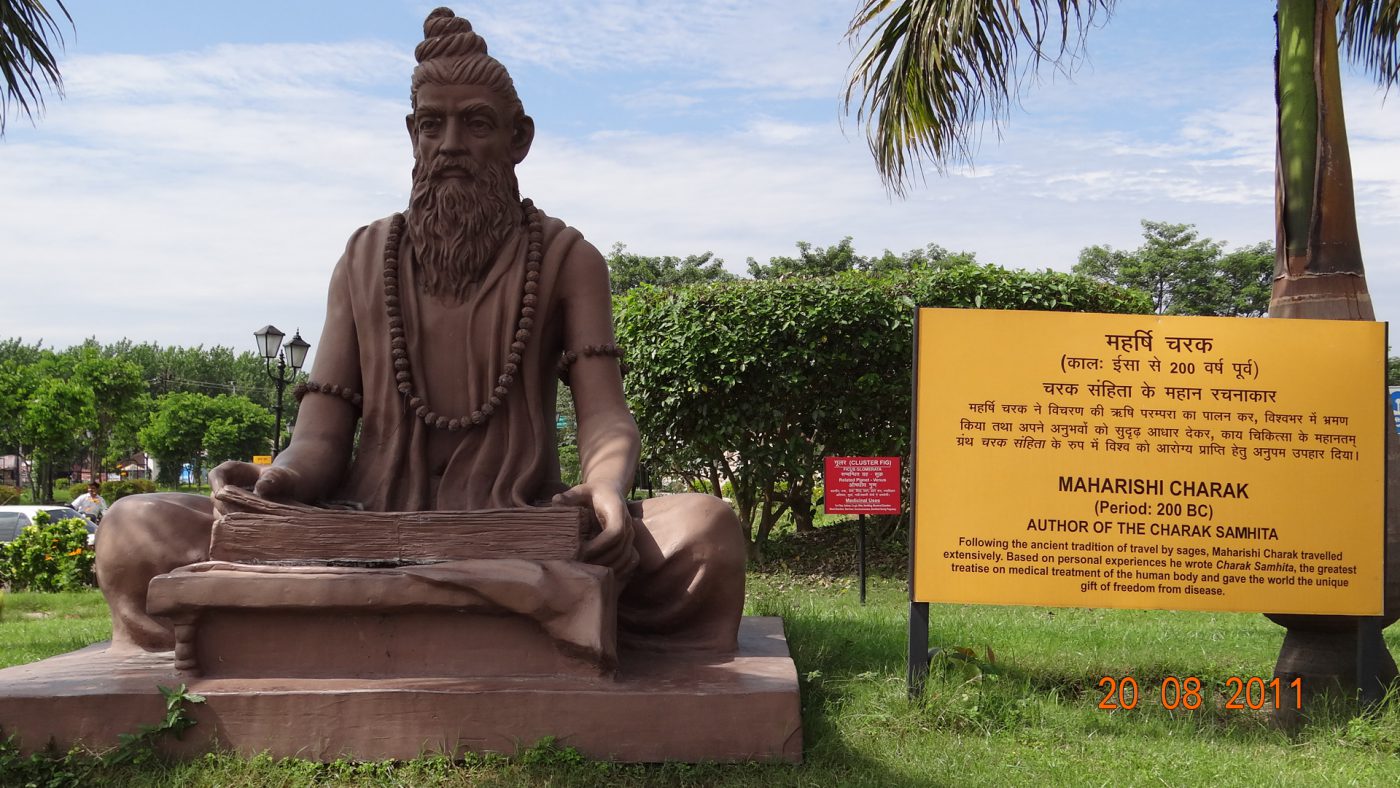Ayurvedic products and herbs
The legend of Maharishi Charaka: The father of Ayurveda
Ayurveda is a Sanskrit word in which ‘Ayur’ means life and ‘Veda’ means science. Ayurveda is the science of life. This wellness system that originated in India around 5000 years ago, focuses on mindful nutrition, stress reduction, and cultivation of a balanced lifestyle. It is the oldest form of medical practice known to man. This ancient Indian medical science is celebrated by people across the world for its efficiency in curing ailments without any side effects. But not many people know about Acharya Charak a.k.a Maharishi Charaka, the father of Ayurveda.
The father of Ayurveda:
Born in 300 BC, Acharya Charaka is crowned as the father of Ayurveda due to his contribution to Ayurveda. He became a principal contributor to the science of Ayurveda who developed the art of Ayurvedic culture. His work ‘Charaka Samhita’ is considered as the Encyclopedia of Ayurveda. While the other parts of the world were struggling with the science of anatomy, Acharya Charaka was already an expert in human anatomy, embryology, pharmacology, blood circulation and diseases like diabetes, tuberculosis, heart disease, etc
According to Charaka’s translations, health and disease are not predetermined. Our lifestyle and environment play a major role in our health and wellness. His works preached that one can live a healthy and peaceful life if he lives in harmony with nature. The Ayurvedic system provides preventive measures and solutions to all kinds of illnesses and ailments. It tells us a way to restructure our life to align with the course of nature. This guarantees complete wellness.
How did Maharishi Charaka receive the gift of Ayurveda?
The legend goes that the Lord Brahma created Ayurveda. He then transmitted this knowledge to his son, Daksha Prajapati. Daksha passed it down to the twin Vedic gods Ashwini Kumaras who then became the physicians of the gods and the Devas of Ayurveda. The twin gods presented Ayurveda to Indra, the king of gods. Indra had three physicians as his disciples, namely Acharya Bharadwaj, Acharya Kashyapa, and Aacharya Divodas Dhanvantari.
From Acharya Bharadwaj’s teaching, his student Agnivesha developed the fundamental Ayurvedic text of internal medicine. Aginivesha wrote all his study in the form of an ancient script, known as ‘Agnivesa Samhita’. Agnivesha’s disciple, Acharya Charak then revised this body of work and compiled it into an easily understandable Ayurvedic guide called ‘Charaka Samhita’ and passed down the knowledge of Ayurveda from gods to sages.
Charaka Samhita:
According to Charaka Samhita, anything and everything in the universe is composed of vata, pitta, and kapha. They are considered as the force of nature in Ayurveda that helps us understand the universe better. In essence, they are derived from the five basic elements: Space, air, water, fire, and earth. It contains over 8,400 metrical verses and is divided into eight divisions (ashtanga sthanas) viz., sutra, nidana, vimana, sharia, indriya, chikitsa, kalpa and siddha sthanas. Each division is further divided into numerous chapters, it describes existing knowledge about medical aspects and the logic and philosophy behind the medical systems.
Ayurveda is one of the greatest gifts India has gifted mankind and Maharishi Charaka played a significant role in this. Ayurveda is not just a medicinal system. It is a life guide that steers us along the path of happy and healthy living.


